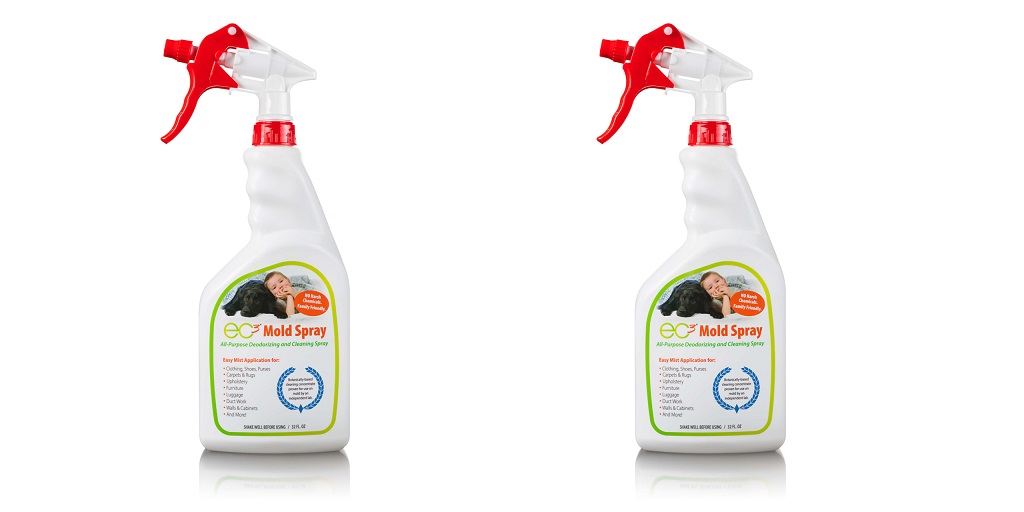
One of the places in your home that needs to be clean all the time is your kitchen. However, the sad truth is that the kitchen also harbors more bacteria and mold than you expect, mainly because of the heat and moisture that emanates from the area.
Maintaining a clean kitchen often involves more than scrubbing with detergent and water. An essential for preventing mold growth and ensuring a healthy environment is a mold spray, such as Micro Balance Health Products’ EC3 Mold Solution Spray.
This is an effective tool for eliminating mold spores and bacteria on various kitchen surfaces. Here’s how you can use mold spray in your kitchen:
Countertops and Food Preparation Areas
Regularly clean countertops with a spray to eliminate mold spores and bacteria. This practice prevents contamination of food and maintains a hygienic cooking space. Ensure the spray is safe for surfaces that come into contact with food.
Sinks and Faucets
Moisture around sinks and faucets can lead to mold growth. Applying anti-mold spray to these areas helps kill existing mold spores and prevents new growth. Pay special attention to the caulking and seals, as mold often develops in these crevices.
Cabinets and Pantries
Dark and sometimes humid, cabinets and pantries can harbor mold, especially if there’s a leak or high humidity. Spray the interior surfaces with a spray against mold to inhibit their growth and spread. Allow the area to dry completely before restocking with food items.
Refrigerators and Freezers
Mold can develop in refrigerators and freezers, particularly in door seals and drawers. After cleaning these appliances, apply mold spray to the interior surfaces and seals to kill any remaining spores and prevent future growth.
Trash Cans
Kitchen trash cans are breeding grounds for bacteria and mold due to food waste. Regularly clean and disinfect trash cans, then use a spray to eliminate harmful microorganisms and reduce odors.
Walls and Ceilings
In kitchens with poor ventilation, steam and grease can accumulate on walls and ceilings, creating an environment conducive to mold growth. Using a spray to lessen the growth of mold onto these surfaces can help control spores and maintain cleanliness.
Floors and Baseboards
Spills and moisture on kitchen floors can lead to mold, especially along baseboards. After mopping, use a mold spray on the floor and baseboard areas to ensure all mold spores and bacteria are eradicated.
Dishwashers
Dishwashers can develop mold in seals and filters due to residual moisture. Periodically spray these areas with mold spray to prevent mold buildup and maintain appliance hygiene.
Ventilation Hoods and Filters
Grease and moisture can accumulate in ventilation hoods and filters, providing a habitat for mold. Regularly clean these components and apply a mold solution using a spray to prevent future growth.
Small Appliances
Appliances like blenders, coffee makers, and toasters can harbor mold in crevices and components exposed to moisture. After cleaning, apply mold spray to these areas to ensure all spores are eliminated.
Safety Considerations and Preventive Measures
When using mold spray in the kitchen, use a brand that is non-toxic and safe for use around food preparation areas. Always follow the manufacturer’s instructions regarding application and drying times. Keep the kitchen well-ventilated during and after application to facilitate drying and reduce inhalation of any fumes.
In addition to using an anti-mold solution, you also need to maintain low humidity levels in the kitchen by using exhaust fans and fixing leaks promptly. Regular cleaning and immediate attention to spills can also prevent mold growth.
Incorporating mold spray into your kitchen cleaning routine is an effective strategy to combat mold spores and bacteria, ensuring a healthier cooking environment.
For more information about Sanitizer Fogger and Nasal Spray For Fungal Sinusitis Please visit: Micro Balance Health Products.